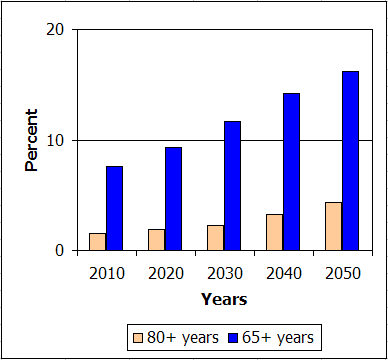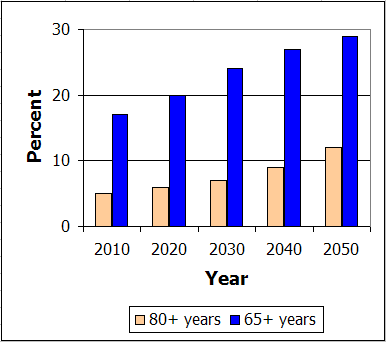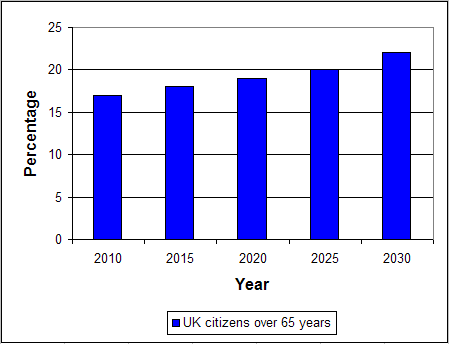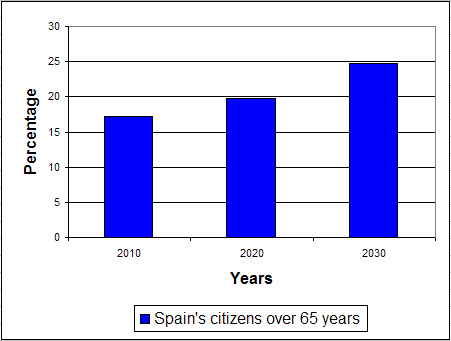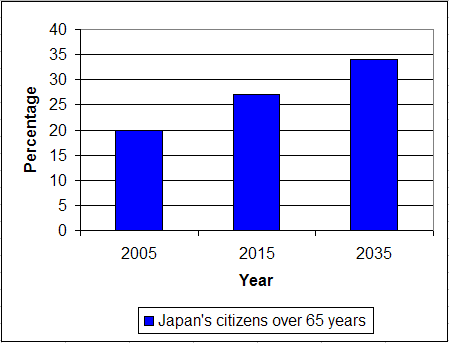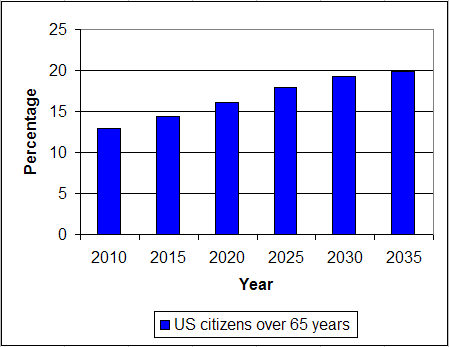Global situation
Notes
The UN estimates that the global population of 65 years will grow from 7.6% in 2010 to 11.7% in 2020 to 16.2% in 2050 with the population over 80 years also increasing - from just 1.5% in 2010 to 4.3% in 2050. Europe today has one of the the oldest populations in the world, and is expected to continue to experience growth in its older population ... (see next slide)
UN References:
- World Population Prospects: The 2008 Revision from the Population Division of the Department of Economic and Social Affairs of the United Nations Secretariat
Note to presenters:
The following slide provides some European statistics on the demographic changes. Several slides are provided in the Appendix with specific country demographic forecasts for you to select from - you will probably just select one or two.
The point to emphasize is that the population is getting older.
